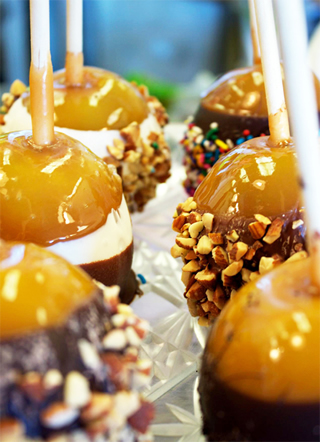Thrills to No End - Page 5
 |
 |
 |
|
|
A new coaster-like ride, the Undertow, opened last season, with individual cars that twist and turn and, like those on the Mouse, threaten to careen off the tracks.
But nothing can replace the Giant Dipper as a coaster fan’s favorite. “I’d probably put that coaster somewhere in my top ten or top 15,” says Chesta, who has ridden some 500 roller coasters worldwide. “It’s not a straight out-and-back coaster, it’s a twister.”
Back in 1974, the New York Times ranked the Dipper even higher—number five in the world, noting, “There are curves everywhere and it’s a most exciting ride.”
“That was a rite of passage for every young kid in Santa Cruz,” Whiting says. “Your first ride on the Dipper.”
“The first time, I went with my dad,” Poletti says. “I would only go with people. I would never go on myself.”
Frightening the Dipper may have been, but not half so frightening to the owners of the Boardwalk as the opening of Disneyland in July 1955.
“The notion of theme parks changed the game,” Whiting says. “Most parks in Southern California, the amusement piers, went out of business. They couldn’t compete with those types of rides and guest experiences.”
There were challenges beyond Mickey Mouse as well. Amusement parks had been closing since their peak in the years after World War I, when the country had some 1,500, to the mid-1930s, when only a few hundred remained, according to Andrew Schiffrin, an environmental planner, in his 1986 article ‘Santa Cruz Beach Boardwalk: Survival of the Funnest.’
After World War II, amusement parks were hurt by “the growing sophistication of the middle class,” who sought “what they considered higher quality entertainment,” he wrote.
The advent of TV didn’t help, nor that many amusement parks, including the Beach Boardwalk, had grown a bit seedy. Plus, many parks occupied land that had grown more valuable than the parks themselves.
But the Seaside Co. had a lot going for it, too, including foresight.
It was during the 1950s through the 1970s that the Boardwalk faced its greatest existential challenge—and prevailed.
Laurence Canfield, president of the Seaside Co. from 1952 to his death in 1984 (his son Charles is president today), toured amusement parks nationwide to see what worked and what didn’t, invested in new rides, expanded the park, and focused on families.
The opening of Disneyland “stimulated this place to get with it and stay current,” Whiting says. In the early 1960s, he adds, “the Cave Train and Autorama were our attempt to offer here the kind of rides Disney was making popular.”
Autorama was a miniature world of freeways, complete with hills and cloverleaf intersections, with kids driving gas-powered cars. “Modernistic,” the Sentinel said.
But, speaking of the auto age, nothing helped the Beach Boardwalk more than Canfield’s canny purchase of acres of land for parking.
“Had that not been done,” Whiting says, “it’s very likely we would not be here today.”
• Santa Cruz Beach Boardwalk’s rides are open daily Memorial Day to Labor Day, and most weekends and holidays during the year. beachboardwalk.com
Photos: Deborah Zajac (© Deborah M. Zajac - circadianreflections.wordpress.com), Susan Teefy, Rich Lewis, Jennifer Kiernan, Zhanna Zabello, tterrace (via shorpy.com); and courtesy Santa Cruz Beach Boardwalk, Mickey McGowan of the Unknown Museum




